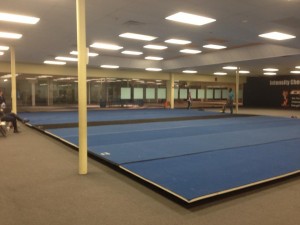Number 10 on our list is to set up a recordkeeping/accounting/in-house office system for your services. Many new business owners tend to put this on the back burner or contract it out to “someone who likes math,” and it can soon become cancerous. Improper record keeping or accounting can become a business owner’s worst nightmare, so attention to detail is extremely important.
Financial Management is the process of managing the financial resources, including accounting and financial reporting, budgeting, collecting accounts receivable, risk management and insurance for a business. The financial management system for a small business includes both how you are financing it as well as how you manage the money in the business.
In setting up a financial management system your first decision is whether you will manage your financial records yourself or whether you will have someone else do it for you.
Bookkeeping refers to the daily operation of an accounting system (recording routine transactions within the appropriate accounts). An accounting system defines the process of identifying, measuring, recording and communicating financial information about the business. A bookkeeper compiles the information that goes into the system, and the accountant takes the data and analyzes it in ways that give you useful information about your business. They will be able to advise you on the systems needed for your particular business and prepare accurate reports certified by their credentials.While software packages are readily available to meet almost any accounting need, having an accountant at least review your records can lend credibility to your business, especially when dealing with lending institutions and government agencies.
The most crucial part of your small business will be setting up an accounting system, collecting bills and paying employees, suppliers and taxes correctly. Unless you are well versed in accounting and bookkeeping, this is likely to be your nemesis if not handled appropriately.
The basis for every accounting system is a good bookkeeping system. What is the difference between that and an accounting system? Think of accounting as the big picture and bookkeeping system as the nuts and bolts of your business. The bookkeeping system provides the numbers for the accounting system. Both accounting and bookkeeping can be contracted out to external firms if you are not comfortable with managing them yourself.
Even if you outsource the accounting functions, however, you will need some type of recordkeeping systems to manage the day-to-day operations of your business – in addition to a financial plan and a budget to make certain you have thought through where you are headed in your business finances. And, your accounting system should be producing Financial Statements. Learning to read them is an important skill to acquire.
There are also several financial software options to choose from such as Peach Tree, Quicken and QuickBooks. We recommend trying the different types of software out and see what works best for you. Some software can work directly with your online registration software and your bank, so it’s best to investigate those options to save time in the future.
Clearly, financial management encompasses a number of crucial areas of your business. Take time to set them up right. It will make a significant difference in your stress levels and in the bottom line for your business.
Read more: http://www.smallbusinessnotes.com/business-finances/financial-management/#ixzz2o3hcFGT5
–Stephanie Beveridge and Carrie Harris
Past posts:
Starting a Gym 101: Setting Up Your Space
Starting a Gym 101: Pricing Your Services
Starting a Gym 101: Licenses, Permits & Insurance
Starting a Gym 101: All Things Legal
Starting a Gym 101: Making the Big Decisions
Starting a Gym 101: Writing a Business Plan
Obtaining a building, space and equipment is number 9 on our list.
An inefficient design of your facility can greatly affect your bottom line. A lot of businesses go too big too fast. Getting the most amount of kids in the least amount of space is how businesses become profitable.
Every square inch of your facility should be viewed as a way to earn money. You will be paying for the space, so you should be earning on the space. Areas that you cannot make a profit on (office, front desk, etc.) should use minimal space, as this will allow you to maximize your moneymaking areas.
In addition, we highly suggest getting an equipment company that can also do a design layout for your facility. With most equipment/design companies, the money you pay for the design will go towards equipment you may want to purchase. Designing pit layouts, in-ground trampolines, etc. takes industry and architectural knowledge, and having a professional design your layout will save you time and money in the long run.
Before finalizing your budget numbers, remember to research codes and permits for your city to ensure your building is up to code regarding ADA, bathrooms, sprinklers, parking spaces, etc. A lot of the times new businesses forget to add those expenses into the cost of building or renovating their facility.
Equipment can be expensive and hard to obtain, financially, while you are starting out. We suggest starting with the minimum amount of equipment you need, and as your business grows, you can purchase more equipment. Depending on what programs you offer, your startup equipment list will vary. Just remember, it’s easier to add equipment once you start turning a profit. There are also websites that sell used equipment from facilities that are closing or wanting to get rid of their equipment—just be cautious and research what you are purchasing.
–Carrie Harris & Stephanie Beveridge
Past posts:
Starting a Gym 101: Pricing Your Services
Starting a Gym 101: Licenses, Permits & Insurance
Starting a Gym 101: All Things Legal
Starting a Gym 101: Making the Big Decisions
Starting a Gym 101: Writing a Business Plan
Sponsored Post: GTM is Taking Spirit Design to the Next Level!
jen : October 17, 2013 1:46 am : Blogs GTM Sportswear is introducing Ultrafuse Sublimation. What’s sublimation? It’s a process that combines color and design in a single process. Why is this important to you? Your color and design are heat-infused directly into the fabric. This results in a fabric that allows comfort and mobility in a lightweight breathable uniform for those long game nights and competition weekends.
GTM Sportswear is introducing Ultrafuse Sublimation. What’s sublimation? It’s a process that combines color and design in a single process. Why is this important to you? Your color and design are heat-infused directly into the fabric. This results in a fabric that allows comfort and mobility in a lightweight breathable uniform for those long game nights and competition weekends.
Each uniform is made of 100% polyester fabric featuring GTM’s moisture management technology. So you don’t have to be afraid to break a sweat! Plus, add colors, logos, mascots, names and design elements without any added cost. With hundreds of style and color combinations, create the team look you want. Click here to learn more: www.gtmultrafuse.com.
 So you’re right in the middle of the battlefield—the gym equipment shop. Mission: inspect prospective purchases. As a companion to our primer on buying used equipment, Tumbl Trak’s Stacey Finnerty has got some useful advice on how to carry out an inspection:
So you’re right in the middle of the battlefield—the gym equipment shop. Mission: inspect prospective purchases. As a companion to our primer on buying used equipment, Tumbl Trak’s Stacey Finnerty has got some useful advice on how to carry out an inspection:
**For steel products that may be welded, tap the welds with a rubber mallet. If the paint cracks after you tap it, there is a problem.
**For air products, ask the seller how long it stays inflated. If the answer is less than an hour, there’s probably a leak. If you suspect a leak, determine if there is a hole that can easily be fixed or if the leak is coming from the valve area where a fix may be more difficult.
**For mats, especially thicker mats (8” or more), beware of those that are lumpy. Foam breaks down over time and will need to be replaced soon if the mat appears lumpy or the vinyl seems loose.
Number eight on our “Starting a Gym 101” list: Decide on any financing you will need and how you will get it. In other words…show me the money!
For startup businesses, this can be one of the biggest obstacles in getting off the ground. Funding is a challenge for almost every small business, and this especially includes cheer/gymnastics facilities. The space and ceiling height requirements for a gym make the start-up cost even more than a regular new business.
A few ideas for financing your start-up:
1. Work a second job to fund business (check CheerProfessional’s upcoming winter issue for more on this!)
2. Major in business, as some business schools can provide connections to help a business get started
3. Ask a friend or relative
4. Dip into personal savings
5. Apply for and secure a bank loan
6. Approach individual investors
7. Go for a government-guaranteed loan
8. Try websites like www.gofundme.com (or similar sites)
9. Work with venture capital firms (angel investors, etc…)
Using personal funds is the most common, and few banks will loan to people who are not risking some of their own personal funds too. While it may feel as if it’s impossible to start a business without having your own deep pockets or knowing someone who does, loans do exist and—with good preparation—are even relatively easy to get.
When seeking external funding, being prepared is essential. Write a business plan, have your financial statements ready to go, line up your references, develop a clear definition of what your business is and look at your credit rating, financial history and business planning; these are all things lenders consider in awarding loans.
Visit http://www.sba.gov for more information on Small Business Loans.
–Stephanie Beveridge and Carrie Harris
Past posts:
Starting a Gym 101: Pricing Your Services
Starting a Gym 101: Licenses, Permits & Insurance
Starting a Gym 101: All Things Legal
Starting a Gym 101: Making the Big Decisions
Starting a Gym 101: Writing a Business Plan
Starting a Gym 101: Legal Forms of Business Ownership








